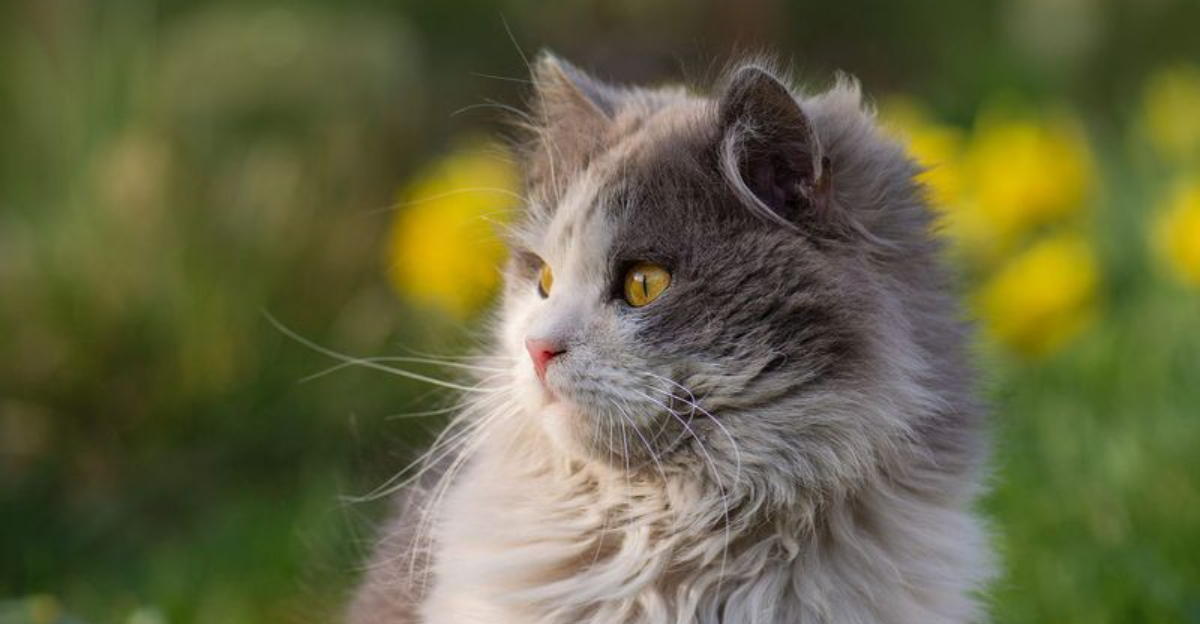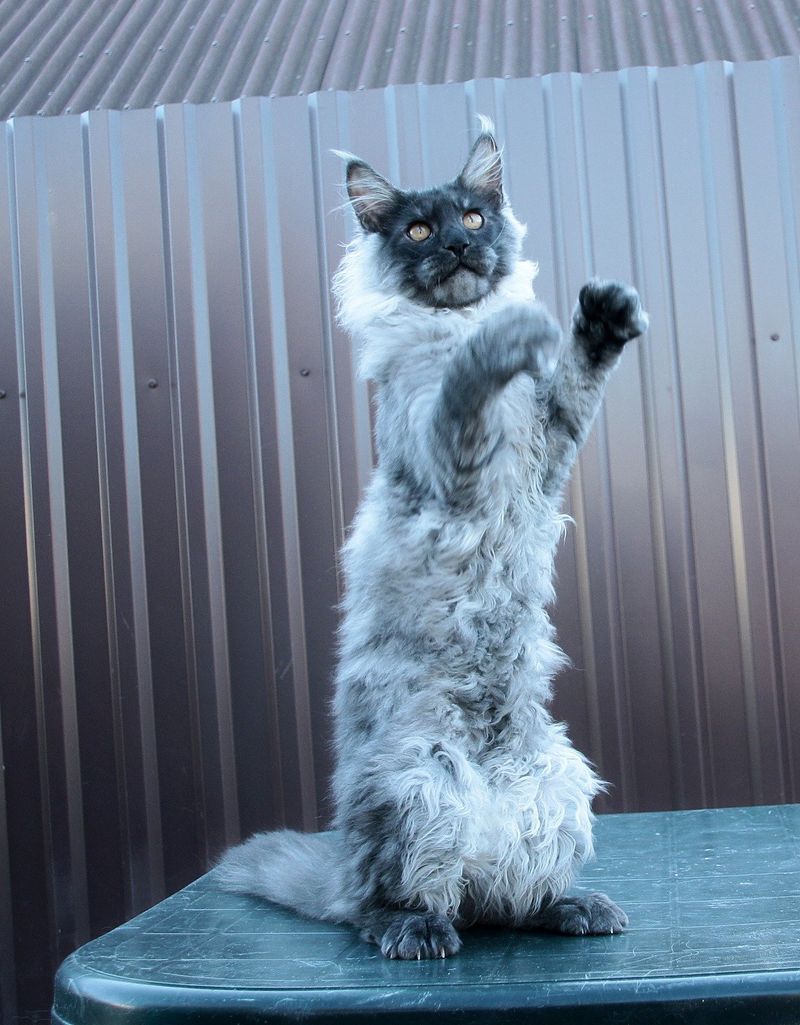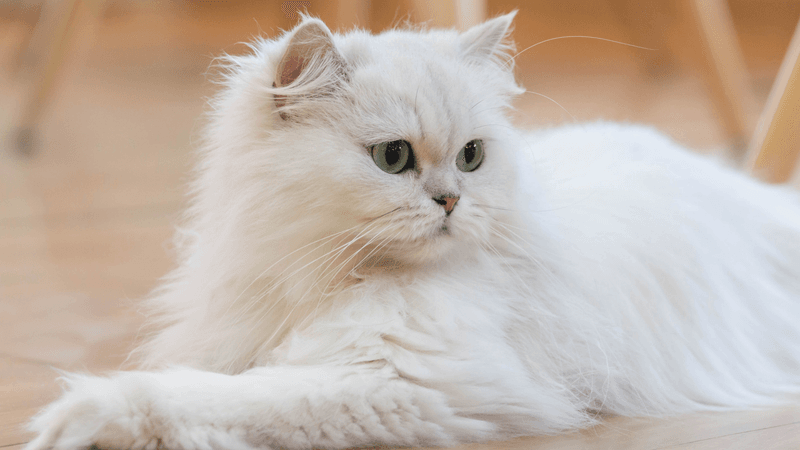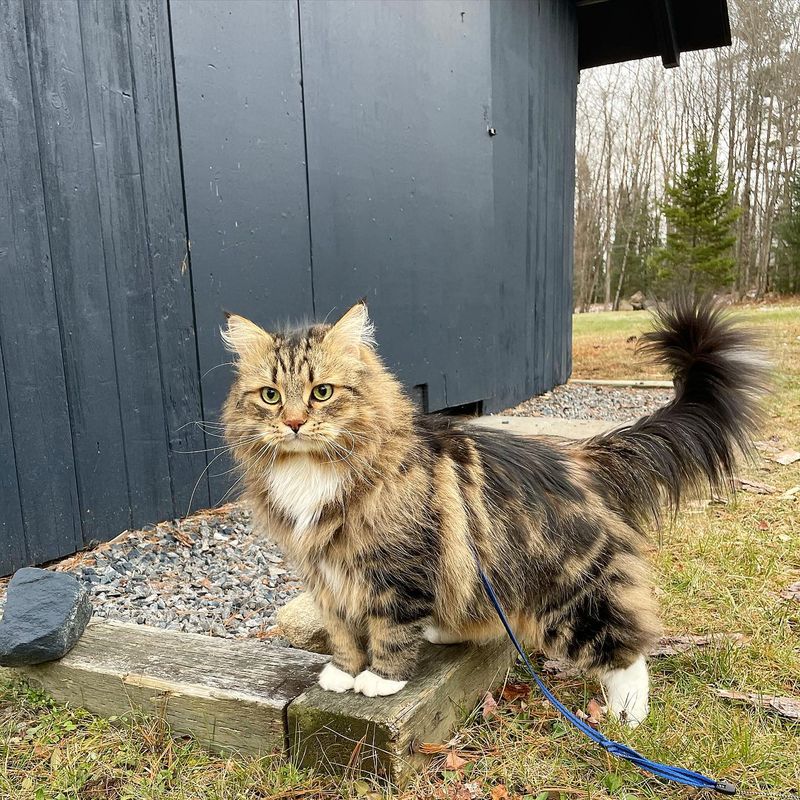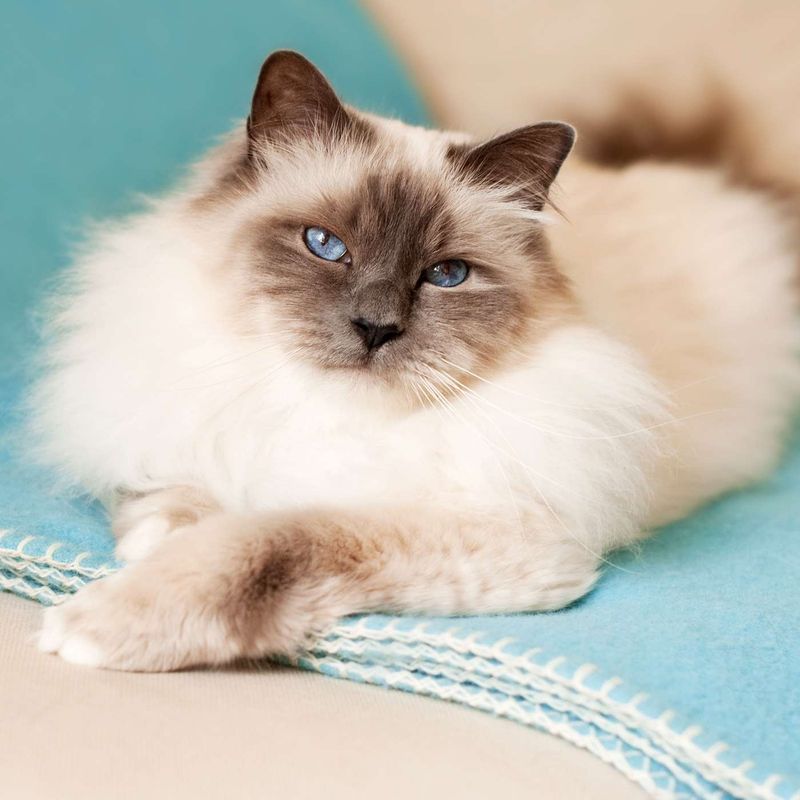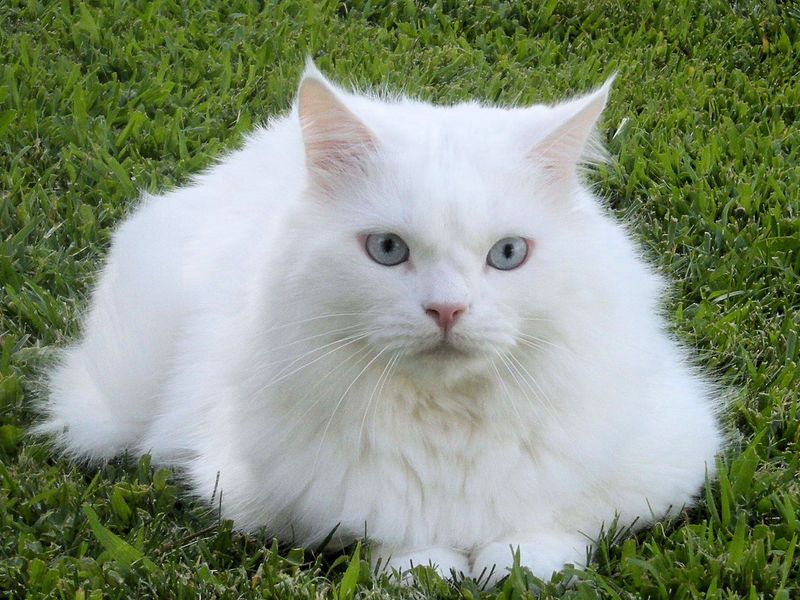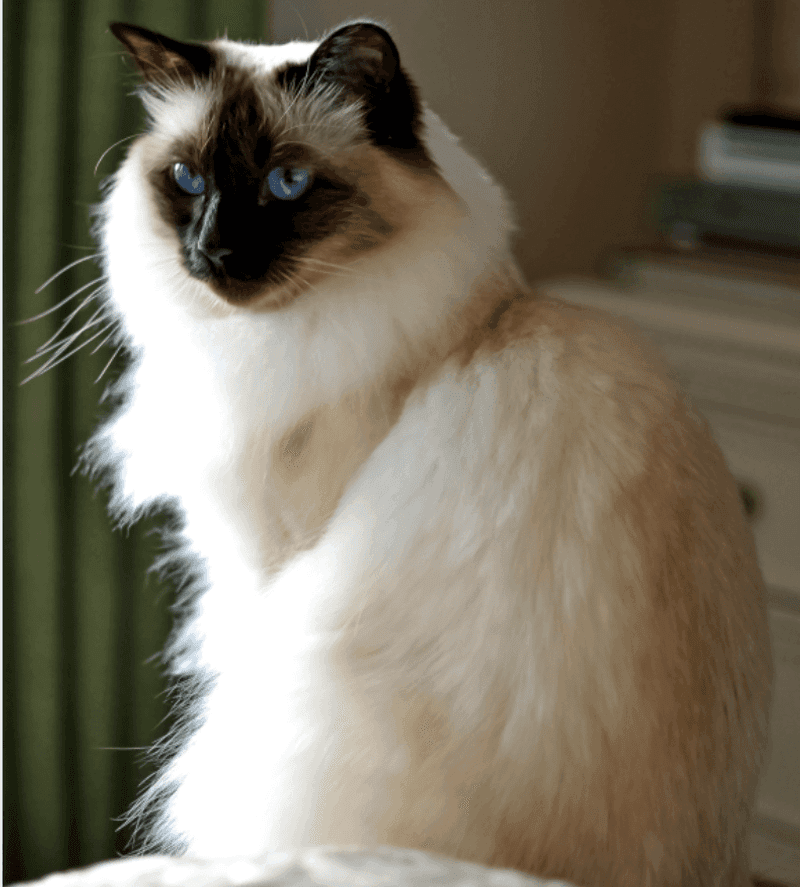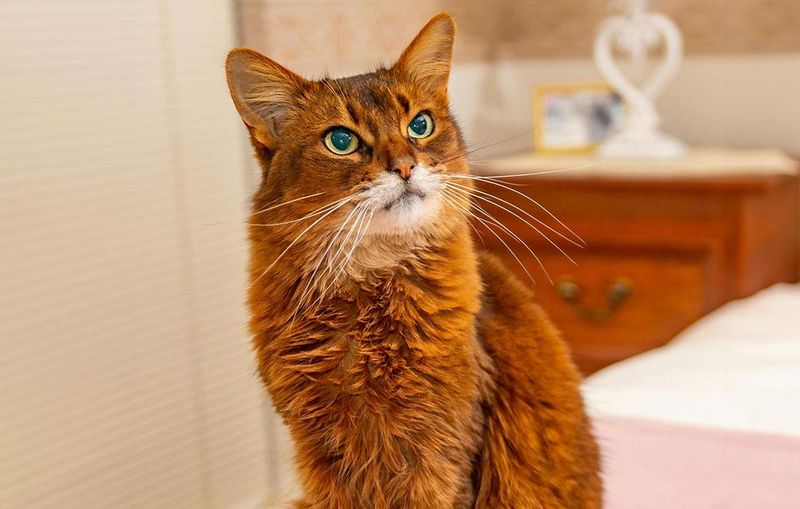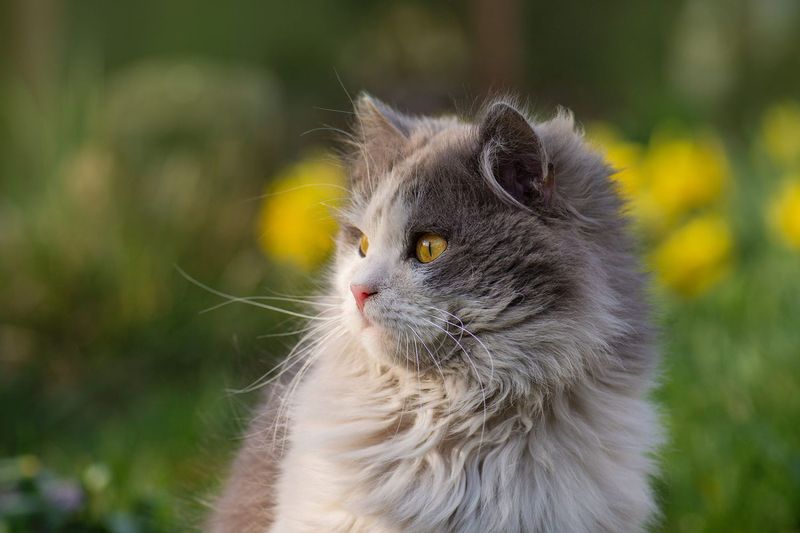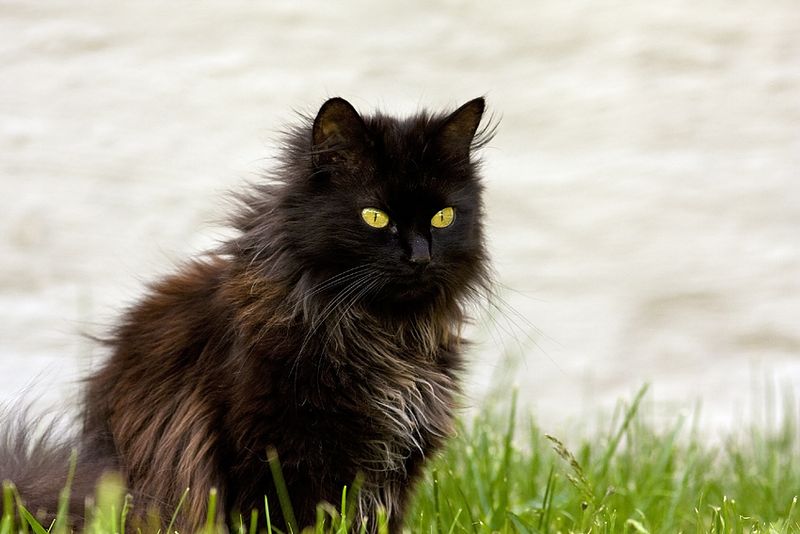📖 Table of Content:
Long-haired cats are admired for their luxurious coats and majestic looks. Their striking appearance is matched by distinctive personalities that add warmth and charm to any household. These breeds range from gentle giants to lively, vocal friends, making them beloved companions for a wide variety of cat lovers.
Many long-haired cats display affectionate and social traits, creating deep bonds with their humans. Their thick fur requires regular grooming, which can strengthen the connection between pet and owner. The combination of beauty and personality makes these cats stand out in the feline world.
From snowy-white coats to rich tabby patterns, long-haired cats bring elegance to every home. Their diversity in temperament and appearance ensures there’s a perfect match for every lifestyle. Exploring these popular breeds reveals the unique qualities that make long-haired cats so irresistible.
1. Maine Coon
Known as gentle giants in the cat world, Maine Coons can weigh up to 18 pounds with males sometimes reaching 25! Their shaggy, water-resistant coats and tufted ears help them survive harsh winters. These friendly felines have dog-like personalities, often following owners around and even playing fetch. They’re not typically lap cats but prefer staying close to their humans. Maine Coons develop slowly, not reaching full size until 3-5 years old. Their distinctive chirping trills and meows are surprisingly soft for their impressive size.
2. Persian
Royalty among cats, Persians have graced palace halls and celebrity homes for centuries. Their ultra-long, silky coats require daily grooming to prevent painful mats and tangles. Sweet-tempered and quiet, these cats prefer calm environments over chaotic households. Their flat faces give them that distinctive pushed-in look, though it can sometimes cause breathing difficulties. Persians move through life at a leisurely pace, preferring to lounge regally on furniture rather than climb curtains. They communicate with soft, melodious voices and express affection through slow blinks and gentle purrs.
3. Ragdoll
Ragdolls earned their name from their tendency to go limp like a ragdoll when picked up. These blue-eyed beauties grow quite large, with males reaching up to 20 pounds of fluffy magnificence. Their semi-long fur feels more like rabbit fur than typical cat hair, lacking the dense undercoat that causes many allergies. Ragdolls develop slowly, not reaching full size and coat maturity until around four years old. Famously devoted to their humans, these cats often greet owners at the door and follow them from room to room. They typically prefer floor level to high perches, unlike many other cat breeds.
4. Norwegian Forest Cat
Straight from Norse mythology, Norwegian Forest Cats (or ‘Wegies’) evolved to survive Scandinavian winters. Their double-layered coats feature a woolly undercoat and water-repellent guard hairs that keep them warm in snow. Strong climbers with powerful legs, these cats can scale vertical surfaces that would challenge other breeds. Their almond-shaped eyes often appear thoughtful, as if contemplating Viking adventures. Despite their wild appearance, Wegies form deep bonds with family members. They mature slowly, with males not reaching full size until five years old. Their bushy tails wrap around them like scarves when they sleep.
5. Siberian
Russia’s national cat brings centuries of cold-weather adaptation in its genes. Siberians have triple-layer coats that change thickness seasonally, becoming incredibly dense in winter and lighter in summer. Athletic and powerful jumpers, these cats maintain a playful kitten-like demeanor well into adulthood. Their barrel-shaped bodies house surprisingly hypoallergenic fur that produces less of the protein that triggers allergic reactions. Siberians form strong bonds with their families and often show uncanny intelligence. They enjoy water play and sometimes dip paws into water bowls or even join humans in the shower. Their deep, melodious purr has been compared to a motor running.
6. Birman
Legends claim Birmans were temple cats in ancient Burma, companions to Kittah priests. Their most distinctive feature is their four white paws, called ‘gloves,’ contrasting beautifully against colorpoint markings. Born completely white, Birman kittens develop their points gradually over weeks. Their silky coats lack the thick undercoat of many longhaired breeds, making grooming easier than you might expect. Quiet and gentle, these cats speak in soft chirps rather than loud meows. Birmans thrive on companionship and often become depressed if left alone for long periods. They’re known for their tendency to supervise household activities from a comfortable vantage point.
7. Himalayan
Created by crossing Persians with Siamese, Himalayans combine the best of both worlds. Their stocky Persian bodies wear the striking colorpoint patterns of Siamese cats, creating a breathtaking visual effect. Behind those vivid blue eyes lies a playful spirit that enjoys interactive toys and games. ‘Himmies’ maintain kitten-like enthusiasm throughout adulthood, though they balance playtime with plenty of elegant lounging. Their thick coats require daily attention to prevent tangles and mats. Unlike their Siamese ancestors, Himalayans speak softly and use body language more than vocalization. These cats form deep attachments to their chosen people and often select one family member as their special person.
8. Turkish Angora
Treasured by Turkish sultans for centuries, these cats nearly disappeared before dedicated breeders saved them. Their silky, single-coated fur flows gracefully as they move, with no woolly undercoat to cause matting. Elegant yet athletic, Turkish Angoras move with ballerina-like grace and can leap impressive heights. Many have odd-colored eyes (one blue, one amber), a trait particularly prized in white Angoras. Natural diplomats, these cats often mediate between other pets in multi-animal households. They form strong opinions about household management and aren’t shy about expressing them. Despite their refined appearance, Angoras are surprisingly water-loving and may join their humans for a dip.
9. Balinese
Balinese cats resulted from a natural mutation in Siamese cats, producing longer hair. Despite their flowing coats, they shed less than many short-haired breeds because they lack an undercoat. Graceful dancers with the same sleek body type as their Siamese cousins, these cats move with incredible agility. Their sapphire blue eyes communicate a range of emotions that owners quickly learn to interpret. Highly social and vocal, Balinese cats participate actively in household conversations. They’re problem solvers who can open cabinets, turn on faucets, and figure out puzzle toys with ease. Their coat requires minimal maintenance despite its length, usually needing just weekly brushing.
10. Somali
Often called ‘fox cats,’ Somalis are the long-haired version of Abyssinians. Their ticked coats feature individual hairs banded with multiple colors, creating a wild, fox-like appearance enhanced by bushy tails. Boundless energy defines these cats, who remain playful well into their senior years. They excel at learning tricks and can be taught to walk on leashes, retrieve toys, and even perform simple agility courses. Somalis form strong bonds with their families but aren’t typically lap cats. They prefer interactive play to cuddle sessions. Their expressive ears and eyes constantly communicate their intense interest in everything happening around them.
11. British Longhair
Teddy bear faces with plush coats make British Longhairs irresistible to many cat lovers. Created by crossing British Shorthairs with Persians, they maintain the round faces and sturdy bodies of British cats but with luxurious longer fur. Reserved yet affectionate, these cats typically show their love through proximity rather than demanding attention. Their thick double coats come in numerous colors and patterns, with blue (gray) being particularly popular. British Longhairs are known for their independence and easygoing nature. They enjoy playtime but are equally content observing household activities from comfortable perches. Their slow maturation means they don’t reach full size and coat development until around three years old.
12. Chantilly-Tiffany
Chocolate-colored beauties with golden eyes, Chantilly-Tiffanys, almost disappeared in the 1970s before dedicated breeders saved them. Their semi-long silky coats lack a thick undercoat, reducing matting and making grooming easier. Moderate vocalists, these cats communicate with soft chirps and trills rather than loud meows. They’re devoted companions who form deep bonds with their humans and suffer from separation anxiety if left alone too long. Chantilly-Tiffanys develop slowly, not reaching full maturity until around two years old. Though the chocolate color is most associated with the breed, they also come in blue, lilac, fawn, and cinnamon. Their gentle nature makes them excellent therapy cats.
